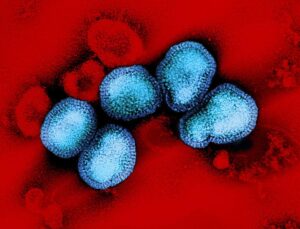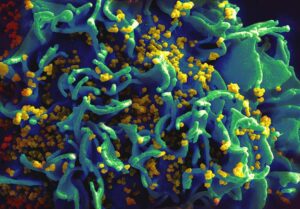While lifestyle factors such as losing weight, exercising and eating healthful foods are typically touted as leading ways to help prevent type 2 diabetes, new research reveals there may be another even simpler way: avoiding light at night.
Why Nocturnal Light Increases Diabetes Risks
Why would light overnight have any relationship with type 2 diabetes? Nighttime light can interfere with the sleep-wake cycle or circadian rhythm, the body’s internal 24-hour clock, which is vital for a variety of physical functions including blood sugar regulation. The brain’s master clock largely takes its cues from the light around us, and unnatural light or darkness can throw off its finely tuned release of hormones, leading to metabolic dysfunction.
“Light exposure at night can disrupt our circadian rhythms, leading to changes in insulin secretion and glucose metabolism,” Dr. Phillips said, explaining that those changes may in turn affect the body’s ability to regulate blood sugar levels, which can promote the development of type 2 diabetes.
Participants in the study wore a wrist device equipped with a sensor that captured 24-hour light exposure over the course of one week. That gave researchers 13 million hours of light sensor data.
The researchers then tracked study participants over the next eight years to see how many went on to develop diabetes. The data revealed a dose-response relationship between exposure to light at night and type 2 diabetes, with the greatest nighttime light exposure corresponding to the highest risk. Researchers found that people in the top 10 percent of nighttime light exposure had up to a 67 percent greater chance of developing type 2 diabetes than those who had the least nighttime light exposure.
The authors of the study concluded that “light at night was a robust predictor of type 2 diabetes for both males and females.”
The opposite was also true: Limiting light at night appeared to reduce type 2 diabetes risk, even in people who had an increased genetic risk of developing the disease.
“The findings are significant, as they suggest that reducing nighttime light exposure in our always-lit society could be an effective strategy to lower the prevalence of type 2 diabetes,” said Christian Benedict, PhD, associate professor of neuroscience at Uppsala University in Sweden, who was not involved in the research. “While this alone won’t counteract an unhealthy lifestyle marked by physical inactivity, poor sleep and junk food consumption, it may be a significant step toward better health, including reducing the risk of type 2 diabetes, a disease that’s increasing worldwide, so accessible preventive measures are crucial.”
Dale P. Sandler, PhD, chief of the epidemiology branch at the National Institute of Environmental Health Sciences, says the latest study affirms her own previous research on the subject: “This study supports and extends previous research, including our own Sister Study of more than 50,000 U.S. women, that links exposure to light at night and poor sleep to poor metabolic health outcomes such as obesity and diabetes. The use of light sensors rather than self-reported data strengthens the findings.”
Avoiding bright lights and bright screens, both before bedtime and overnight, is just one of several tips that experts routinely share for a better night’s sleep. Regular exercise and a consistent sleep schedule may also help reset circadian rhythms.
“Our findings suggest that reducing light exposure at night and maintaining a dark environment may be an easy and cheap way to prevent or delay the development of diabetes,” Phillips said.











Post Comment